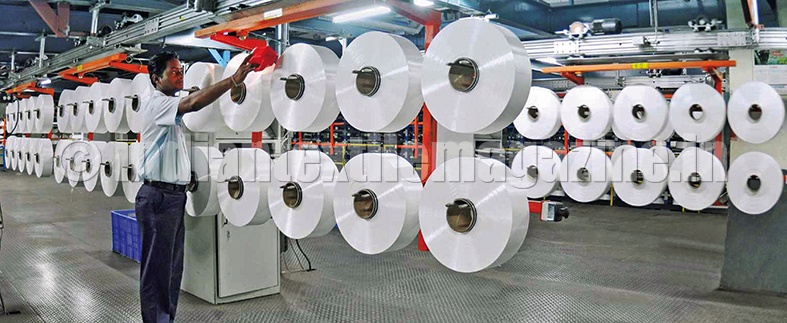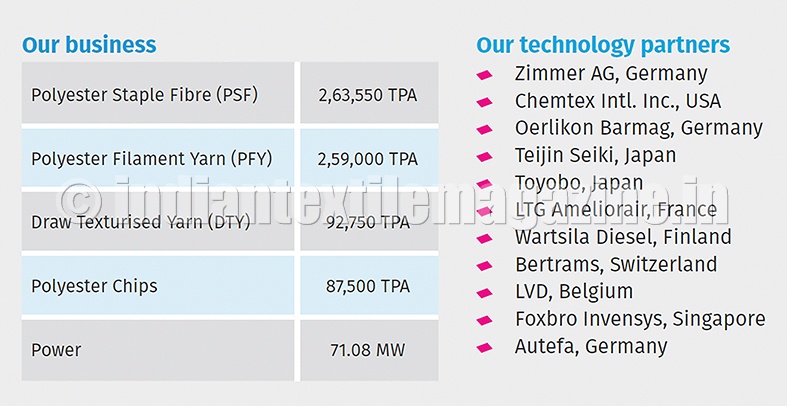By O.P. Lohia, Chairman and Managing Director, Indorama Synthetics Ltd
The global economy is showing green shoots of recovery, albeit at a slow pace. Majorly, the growing optimism in the US and the UK stands out in sharp contrast to the dismal economic performance of the Eurozone and Japan. Such growing optimism will certainly create ripple effects and synergies in the growth of emerging economies like India. Even in China, there is growth, but at a slower rate. Amid a sense of optimism, there are many challenges to be overcome. To overcome the challenges and to attain growth, it has become inevitable for businesses to constantly churn and recalibrate their strategies and models, which most of the businesses are doing worldwide now. Interestingly, the entire world is focussing on India as one of the big emerging markets. This is happening, as the Government is moving in the right direction and creating an environment conducive for economic growth. It has adopted and implemented several reform measures for accelerated development. More such reforms are anticipated in the future also. The 7.5 per cent estimated GDP growth rate year-on-year in the fourth quarter of 2014 stands testimony to this fact. Most importantly, the Government impetus to revive the manufacturing sector will surely bring back the economy on the growth track. Further, revival of the manufacturing sector can create large-scale investments and employment. Overall, going forward, broad-based economic stability can be seen both at the local and global level.

Polyester industry scenario
The polyester industry saw a lot of ups and downs during the financial year, like shortage of raw material, currency volatility, and inventory losses due to the unprecedented fall in crude oil prices and the consequent raw material and finished goods prices, among others.
An adverse civil and economic situation in the European region and Central Asia, which is a big market for India, posed many challenges to the Indian polyester industry.
Locally, the levy of anti-dumping duty on PTA by the Government made raw material expensive and also the manufacturing cost. This has resulted in shortage of raw material and thereby lower capacity utilisation. But the recent withdrawal by China of the anti-dumping measures signals some positive development.
The polyester industry witnessed multiple challenges during 2014-15. It saw crude prices declining sharply during the year, triggering reduction in purified terephthalic acid (PTA) and mono ethylene glycol (MEG) prices. This led to significant inventory losses.
However, every cloud has its silver lining. With polyester prices bottoming out and the rupee stabilising, business sentiments and industry performance will improve, signalling positive trends and sustainable growth for this industry.
Let’s look at some statistics. In 2014-15 India’s total fibre production is around 11 million tonnes, comprising 60 per cent cotton and 40 per cent man-made fibre (MMF). Globally the scenario is different, with 70 per cent polyester MMF share and 30 per cent cotton. Therefore, the country has a lot of headroom to grow and can witness paradigm shift from cotton driven to polyester MMF in the coming years.
Textile export statistics also revival the same trend, with cotton having a major share. India is targeting textile exports worth $300 billion. Cotton still has a major share in it. There is a huge potential also to increase export of MMF-based textiles.
The total import of MMF and MMF-based fabrics is around $2.43 billion. Policy initiatives have to be taken to encourage domestic manufacturers to expand MMF production, optimise their cost structure and export at competitive prices.
Despite the challenges faced in 2014-15, Indorama Synthetics clocked an annual turnover of Rs. 2,708.90 crores against Rs. 2,592.63 crores in 2013-14. This was successfully achieved on account of focussed marketing efforts and better outreach to customers, both locally and internationally.
Expanding product basket
We have rightly and timely sensed the need of the customer for speciality products. We are growing our specialty product basket with products like super high tenacity PSF (SHT fibre), Optical White (OPW) and Optical Bright (OB) and Dope Dyed Black (DDB) PSF fibre, Trilobal bright POY, DTY and FDY.
Indorama Synthetics planned capex to replace old and inefficient DTY machines with new higher capacity ones. The number of DTY machines has been raised from 56 to 65. Eight old DTY machines have been replaced with higher capacity machines. We are investing in advanced equipment to modify and help produce new varieties of value-added specialty products in order to strengthen our margins.
Although availability of resources and technology plays a key role in our business, people are the biggest drivers of change at Indo Rama. We have a team of go-getters who are committed to deliver value, no matter what the odds are. We are committed to investing in talent and fostering an environment of learning and collaborating. Our goal is to transform Indo Rama into a ‘great’ company in the coming decades.
Road ahead
Despite challenges, we will continue to focus on our businesses, environment and community initiatives as part of our sustainability strategy. I am confident that the macro business environment is improving gradually, and this is the time to consolidate our strength and focus more on opportunities as they emerge on the horizon.
We expect to perform far better with the demand upswing and economic revival globally and locally.

